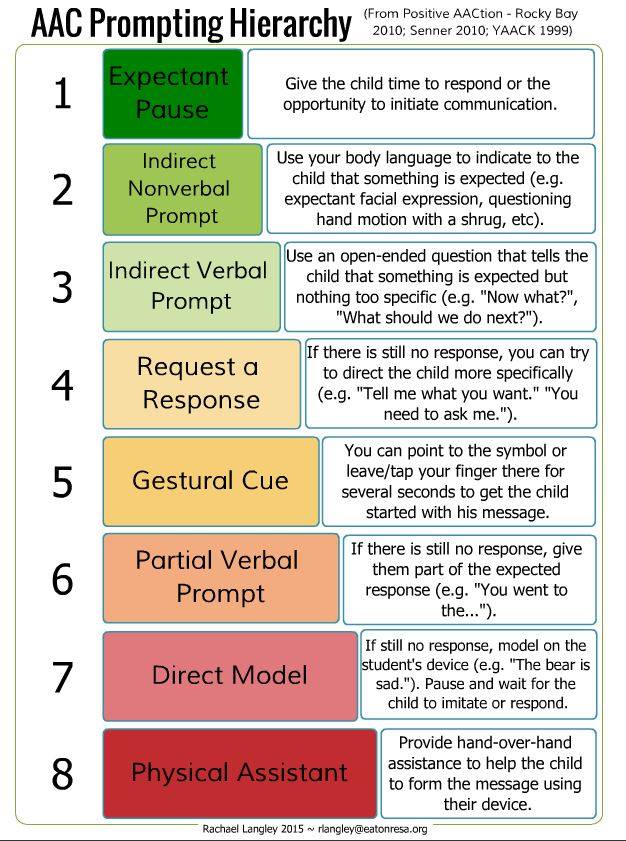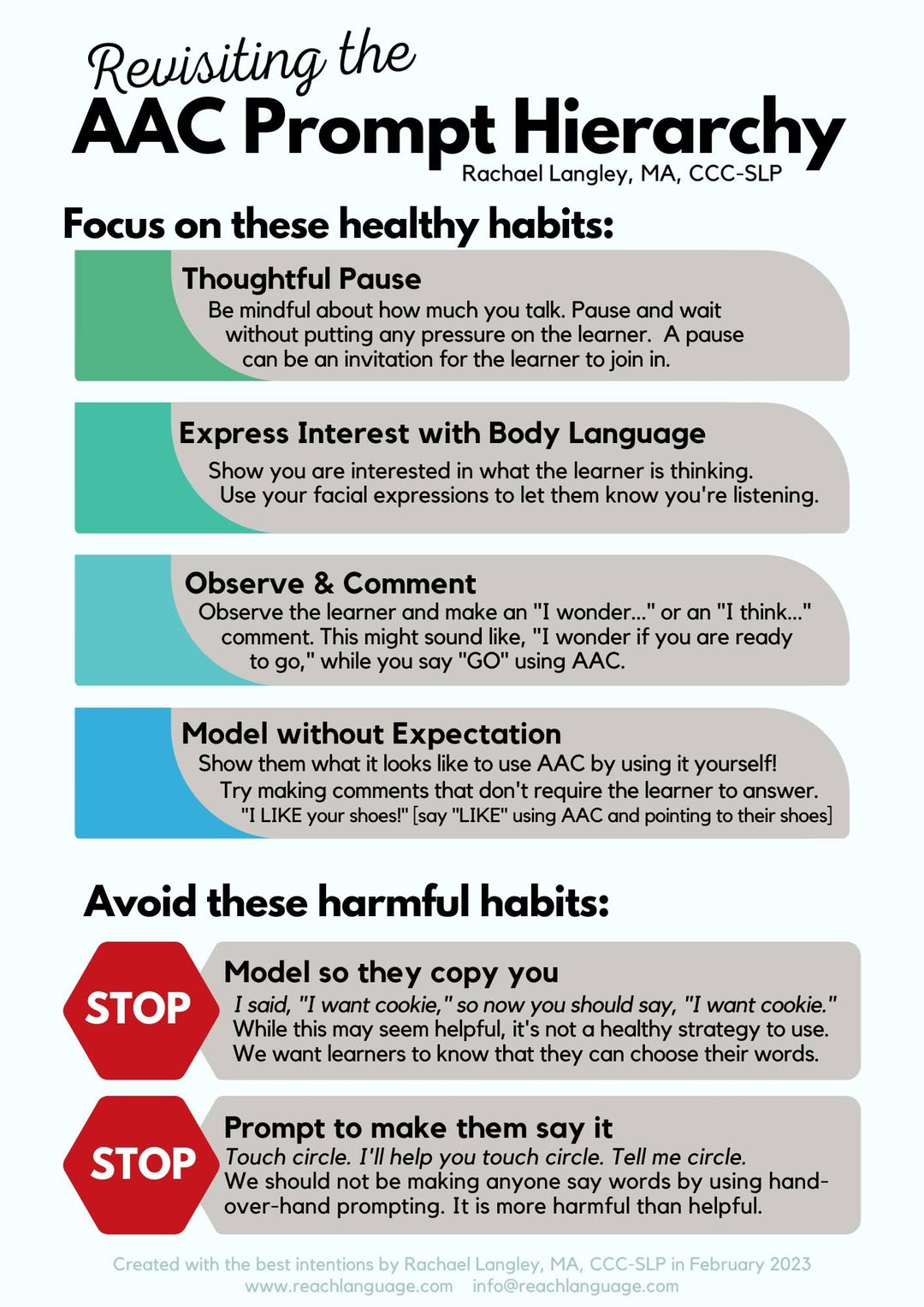10 Considerations When AAC Is Not "Sticking"
Mar 06, 2025Introducing an AAC (augmentative and alternative communication) system is an exciting step toward supporting a child's communication. But what happens when it feels like it's just not working? If your child isn’t engaging with their device, don’t panic! There are many reasons why AAC may not seem to be "sticking" yet.
Before assuming that AAC isn’t the right fit, consider these ten key factors:
1. Have You Been Consistently Modeling AAC?
AAC use doesn’t happen overnight. Many autistic children need months of consistent exposure before they begin engaging with their device. Are you modeling AAC all day, every day? Are other support team members modeling, too? If not—keep going! The more they see AAC being used, the more familiar and accessible it becomes.
2. Is the AAC System Robust Enough?
Some AAC setups only allow for requesting, which can be limiting. If a child can’t express their full range of thoughts—like asking questions, commenting, or sharing emotions—they may lose interest. A robust AAC system provides access to a wide variety of words beyond just basic requests.
3. Has It Been Personalized?
Does the AAC system reflect what matters to your child? Adding favorite foods, TV shows, special people, and meaningful phrases can make a huge difference. Personalization helps create an emotional connection with the device, making it feel more like their voice.
4. Are You Modeling Beyond Core Words?
Core words (the most commonly used words in speech) are important, but they might not be the most engaging starting point. Many children show more interest when they see "fringe" vocabulary—words about their favorite toys, places, characters, or even gestalts/scripts—modeled in meaningful ways.
5. Is the Whole Support Team Trained?
AAC use shouldn’t be limited to just one setting or one person. Are teachers, therapists, caregivers, and family members modeling AAC, too? The more people who incorporate AAC into everyday interactions, the more natural and accessible it becomes.
6. Does AAC Feel Fun or Like a Chore?
If a child associates AAC with pressure, demand, or constant prompting, they may avoid using it. Instead of requiring AAC use, aim to inspire it. Make it part of play, use it during fun activities, and model without expectation. The goal is to make AAC feel natural and enjoyable!
7. Are You Allowing Free Exploration?
Some children need time to explore their device freely: pressing buttons, playing with words, stimming with it, or even rearranging icons. This is an important part of learning! If we limit how they interact with AAC, we may unintentionally make it feel restrictive instead of empowering.
8. Are You Responding to All Communication Attempts?
Even if it looks like "just stimming," every AAC interaction is meaningful. If a child repeatedly presses a word like chocolate, chocolate, chocolate, for example, instead of redirecting, try engaging! "I love chocolate too! Maybe we can get some later." Validating their communication encourages continued exploration and use.
9. Have You Given It Enough Time?
AAC takes time to click. If it’s only been a few weeks or months, keep going. If all of the above factors have been addressed and there’s still minimal progress, consider seeking guidance from an AAC specialist who can help troubleshoot specific barriers.
10. Have You Considered Motor Challenges?
Many autistic children experience motor planning difficulties (dyspraxia), which can impact their ability to use AAC effectively. If your child struggles with selecting words, adjusting the device’s settings, exploring alternative access methods (like eye gaze or keyguards). If all other factors mentioned above have been considered and implemented, and AAC is still not "sticking", it may be time to consider increased prompts/cues. I like to refer to Rachael Langley's AAC prompt hierarchy (2015) for guidance:

Note: if child truly needs physical assistance, please start with hand under hand prompting, and always ask for consent and discuss body autonomy prior to assisting.
Here is an updated version of the prompting hierarchy Rachel released in 2023:

Grab this freebie!
All you have to do is join my freebie library HERE and you can access all of my freebie handouts and resources, including this one!
Further Reading on AAC Prompting
If you're interested in exploring AAC prompting in more depth, consider these valuable resources:
-
The Problems with Hand-Over-Hand v2.0 – Jane Farrall discusses the limitations and concerns associated with hand-over-hand prompting, advocating for more effective teaching strategies. janefarrall.com+1janefarrall.com+1
-
Rethinking the AAC Prompting Hierarchy in Severe Apraxia – Kate Ahern explores alternative prompting hierarchies tailored for individuals with severe apraxia, emphasizing modeling and autonomy. pediastaff.com+1praacticalaac.org+1
-
Verbal Prompting, Hand-over-Hand Instruction, and Passive Observation in Teaching Children with Developmental Disabilities – This research article by Biederman et al. examines the effectiveness of different prompting strategies, highlighting the benefits of passive observation over more intrusive methods.
-
Revisiting the Adapted AAC Prompt Hierarchy: Seven Years Later – Kate Ahern reflects on the evolution of the AAC prompt hierarchy, emphasizing the importance of modeling and minimizing physical prompts. aacvoices.com
These resources offer diverse perspectives on AAC prompting, providing insights into best practices and considerations for supporting AAC users effectively.


